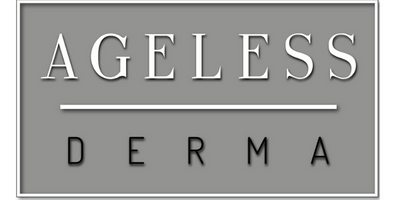
Wrinkles May Show Maturity, But Most People Don’t Want Them
When our skin ages faster than we do, chronologically, it‘s called premature aging. Premature aging manifests itself as wrinkles around the eyes and mouth and as deepened expression lines. Many of these fine lines and wrinkles are hereditary, but heredity is not destiny, and much of this damage could have been prevented if proper skincare precautions had been taken.
Aging and Wrinkles
Skin becomes thinner with age and loses its ability to retain moisture, making it dry. At the same time, aging reduces the production of collagen and elastin, which are responsible for keeping the skin firm and elastic so that it snaps back into shape when stretched. When these elements break down, the skin loses its ability to repair itself, so there is a vicious cycle of skin sagging and wrinkling as it dries out. The cycle continues unless we intervene to repair and rejuvenate our skin.
Sun Exposure is a Major Cause of Wrinkles
One of the main causes of wrinkles, other than aging, is sunlight. Many of us grew up without knowing how harmful the sun could be or that people with fair or light skin were even more susceptible to the sun‘s rays than others. We spent endless hours soaking up the sun with little or no sunscreen so that our bodies were nnecessarily exposed to the UVA and UVB rays that at the very least can cause premature aging– and could potentially cause skin cancer as well.
Photo-aging occurs when there is skin damage from the sun. It is usually prevalent on the most exposed parts of the body (e.g., the face). It creates wrinkles, fine lines, sagging skin, and skin keratosis or liver spots, along with really rough, dry skin. Continued exposure over time makes the skin especially vulnerable to photo-aging if steps are not taken to prevent further damage.
Sunscreen and the New Government Guidelines
Very recently the Federal Drug Administration (FDA) and the U.S. Government changed the guidelines regulating sunscreen products.
For the first time in over thirty years, the FDA has submitted new guidelines for the use of sunscreen products. Consumers will start to see changes on the labels of these products by the summer of 2012. If the product does not protect the user from both Ultraviolet A (UVA) and Ultraviolet B (UVB) radiation, the label cannot state that the sunscreen protects against skin cancer or premature aging.
Sunscreens will no longer be allowed to advertize sun protection factors (SPF) above 50. Instead, the label can only indicate that the SPF is 50+, since there is no evidence to demonstrate that protection is improved above 50 SPF.
In order to be considered a broad spectrum sun protectant, a product has to provide both UVA and UVB protection. At present, UVB protection is displayed on most sunscreen or sun block products. UVB rays can cause cancer, aging, and sun damage, but UVB rays can be blocked—by the windows in your home or the windshield in your car—because they cannot penetrate as deeply as UVA rays. UVA rays do penetrate and do cause skin damage, and both types of sunrays can cause cancer. The FDA has therefore determined that sunscreen products must protect against both.
Another change is that products will no longer be able to promote themselves as waterproof since no product is completely waterproof, nor can it be marketed as ―sun block‖ since nothing can completely block the sun‘s rays. Labels must now use words like ―water resistant,‖ and they must state how long, in minutes, the product will resist water before it must be reapplied.
The newer guidelines are meant to help consumers avoid confusion about which sun care products actually protect them from cancer and premature aging. A sun product that provides broad spectrum protection against both UVA and UVB rays with an SPF of 15 or higher can state that it will protect against cancer and premature aging. If a sunscreen is not a broad spectrum protectant (e.g., only protects against UVA OR UVB rays—not both), it cannot state that it will help prevent cancer or skin aging.
Steps to Take to Deter Wrinkles
Many people have occupations that keep them outdoors all the time—farmers and fisherman for example—and they are constantly exposed to the sun. Recreational activities like swimming, sailing, and other outdoor sports like golfing, tennis, baseball, and soccer expose participants to the sun and the weather. It is therfore essential that people participating in these types of activities be well protected.
An adequate broad spectrum sunscreen is essential for anyone that spends a lot of time outdoors, particularly those with sensitive or fair skin that is more prone to sunburn. An SPF of 15 or more provides good protection against the sun‘s harmful UVA and UVB rays. Clothing plays a major part in protecting the skin and minimizing the risks of exposure to the sun. Wearing a hat protects the top of the head, which is especially vulnerable if you have short or thin hair. A hat with a wide brim protects the face as well. Long sleeves cover the arms and pants or long dresses limit exposure to the legs. All of these precautions help deter wrinkles and fine lines.
Liquid error (templates/article line 10): Could not find asset snippets/relatedblogs.liquid